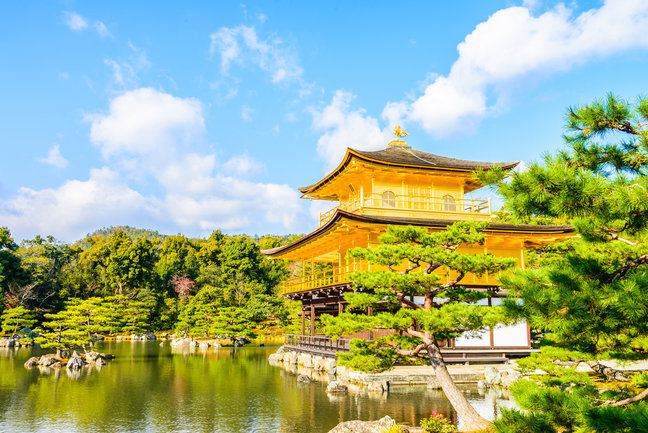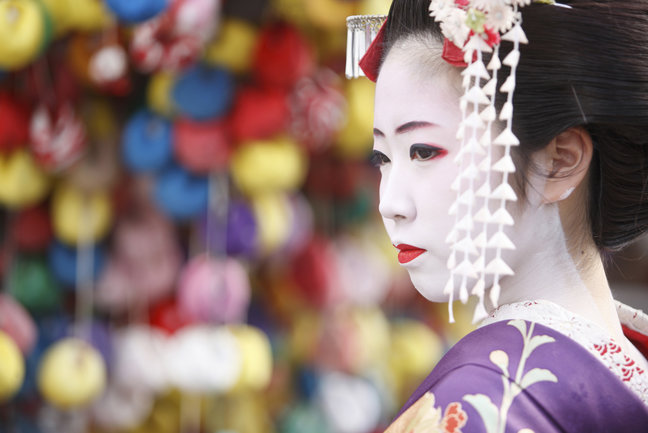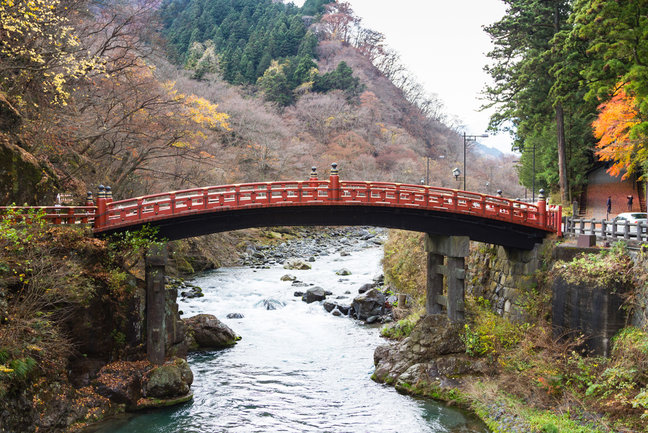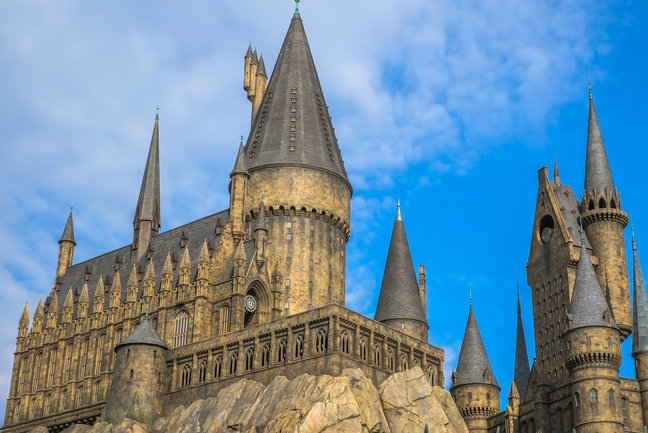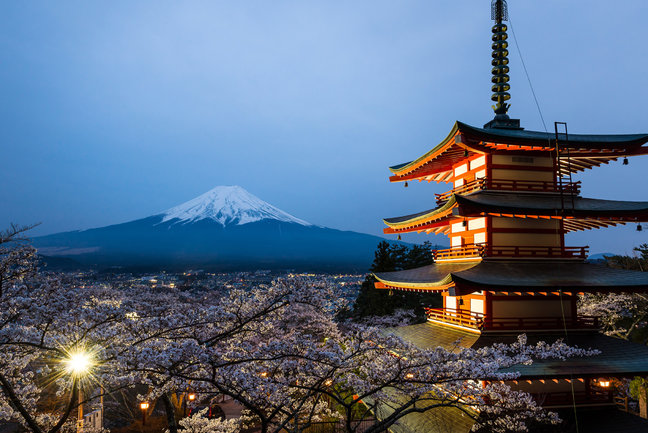Please enter your username and password to logon to the member pages

Comprehensive Tour of Japan
Comprehensive Tour of Japan Overview
Comprehensive tour of Japan Explore the best of Japan from the historic shrines and temples to the stunning Mt Fuji and heritage rich Kyoto. Enjoy hot onsen baths, stay in a Japanese-style ryokan, watch a Geisha performance, witness the monks at prayer in Koyasan, visit the delightful towns of Takayama, Kanazawa and Shirakawa-GoDay 1: Tokyo Arrival
Upon your arrival at Tokyo Airport, you will be met by an Eastravel representative who will assist you in boarding the right train or shared shuttle bus to your hotel.
The rest of the day is free at leisure.
Overnight in Tokyo.
Day 2: Tokyo touring
Meet your guide at your hotel for a full day of sightseeing in Tokyo, utilising the city’s efficient train system. Stroll through Hama-Rikyu Teien, the former private garden of an Edo Period lord. Take a break in the tea house known as ‘Nakajima No Chaya’ which stands elegantly in the park’s lake. Here, you will have the chance to get a taste of matcha, or Japanese green tea.
You will then have the opportunity to see Tokyo from a different angle as you take the boat cruise along the Sumida River.
Next stop will be Asakusa, a part of Tokyo’s shitamachi, or old town. Asakusa is the city’s oldest Geisha district and also the home to Senso-ji Temple, Tokyo’s oldest Buddhist temple. The streets around Senso-ji feature many traditional shops that sell Japanese crafts and souvenirs.
In the afternoon, head across Tokyo to Omotesando, commonly referred to as Tokyo’s Champs-Elysee. This broad, tree-lined avenue boasts a multitude of fashion flagship stores designed by internationally renowned architects.
Explore Meiji Shrine, which is Tokyo’s most famous shrine, dedicated to the spirit of the late Emperor Meiji.
Evening - we suggest dinner at the Robot Restaurant in the Shinjuku district.
Day 3: Tokyo to Hakone & Mt Fuji
Make your way to Shinjuku Station and take the Romance Car to Hakone, the gateway to Mt. Fuji and its surrounding national park. This small town is famous for its onsen, or natural hot springs, and has natural beauty in abundance.
In Hakone, stay in a ryokan, a traditional Japanese-style accommodation complete with tatami mats, shoji rice paper sliding doors, and onsen baths.
In the evening, you can relax in your yukata or lightweight kimono while having your dinner of kaiseki ryori, a Japanese multi-course meal.
Overnight in Hakone.
Day 4: Hakone & Mt Fuji
Spend the whole day exploring Hakone with your Hakone Free Pass. which serves as your ticket to the numerous forms of transportation in the area.
You can take the Hakone Tozan switchback train that zigzags through the mountains and offers views of the surrounding valleys. Afterwards, you can ride the Guinness World Record-holder ropeway all the way up to Mt. Owakudani, passing over sulfurous fumes, hot springs, and hot rivers.
While on Mt. Owakudani, you can sample one of Hakone’s specialties, the kuro-tamago, which is an egg hard boiled in the sulfuric hot springs. From the mountain take the ropeway bound for Togendai, where you can ride a replica of a pirate ship that cruises along Ashinoko, a body of water that was formed after a volcanic eruption that occurred more than 3,000 years ago.
Hakone is also home to many museums and parks. One of these is the Hakone Open Air Museum that features a harmonic balance between nature and art by exhibiting various sculptures on its spacious grounds in combination with beautiful views of the surrounding valleys and mountains. It also features various indoor galleries such as the sizable Picasso Collection that displays some of his paintings, prints, sculptures, and ceramic creations.
Mt. Owakudani has been temporarily closed due to volcanic activities.
Overnight in Hakone.
Day 5: Hakone to Matsumoto
Head to the train station and take a scenic train journey to Matsumoto, located in the Japanese Alps.
Located 3 hours from Tokyo, Matsumoto has flourished as a castle town since the 16th century. In addition to its historical and cultural heritage Matsumoto is surrounded by mountains and is acclaimed for its beautiful views. This afternoon make a visit to Matsumoto Castle, one of the most complete and beautiful among Japan's original castles. The castle is also called Crow Castle because of its black walls and spreading wings.
Matsumoto is also knows as one of the best bar towns of Japan, so tonight, get lost in the little streets of the town and try out some typical Japanese old style bars.
Overnight in Matsumoto.
Day 6: Matsumoto to Kanazawa
Continue your journey by train to Kanazawa. On arrival check in to your hotel.
We suggest a visit to the old Town of Higashi Chaya District.
It is one of the three, well-preserved chaya districts in Kanazawa. A “chaya,” which means ‘teahouse’ in Japanese, was where a Geisha used to entertain her guests with a song or a dance. Here you will find many artisan shops, such as Hakuza, a shop that sells one of Kanazawa’s specialties – gold leaf products. The tearoom inside the shop is totally covered in gold.
Overnight in Kanazawa.
Day 7: Kanazawa
Explore Kanazawa, a beautifully preserved castle town. In the 17th century, it became a thriving centre for culture and arts and was the wealthiest town in Japan for some time.
Leave with your guide to visit the impressive Kenroku-en Garden which is ranked as one of the top three in Japan. Afterwards head to the imposing Kanazawa Castle, the former home of the powerful Maeda clan who ruled the area for 300 years. Take a short walk to nearby Omicho Market, known throughout Japan for its fresh seafood and fine sushi. Why not have lunch here?
Walk across town to the old Samurai district of Kanazawa and take a stroll through the Nomura House, a restored residence of a high ranked samurai family. Also in the area are many other historical buildings, including a pharmacy and old homes turned into museums.
Overnight in Kanazawa.
Day 8: Kanazawa to Takayama
Make your way to the train station for your journey to Takayama. Located on the edge of Hakusan National Park, Takayama is a historic and picturesque town famed for its traditions of artistry and craftsmanship. Explore the old town and its myriad of narrow streets, shrines and sake stalls. See the Festival Floats Hall, Taka-yama Jinya, historic wooden houses, and the Takayama History and Art Museum.
Overnight in Takayama.
Day 9: Day tour to Shirakawa-go
Take a 50 min local bus to World Heritage Listed Shirakawa-go. The bus terminal is on your left of the JR station.
Set at the foot of Mt Haku-san, among picturesque rice fields bisected by a winding river, the pretty mountain village of Shirakawa-go is home each autumn to the celebrated Doburoku Festival, and is a UNESCO World Heritage site.
Explore the historic village among more than 100 wonderfully preserved thatched-roof houses. Wander among more examples of Japanese vernacular architecture at the excellent outdoor museum of Gassho-zukuri Minka-en, including faithful reconstructions of a temple, coalhouse, and horse paddock. Witness performances of traditional Japanese crafts such as weaving and dyeing, at the Soba Dojo experience for yourself how to prepare Japanese soba noodles.
Return to Takayama for overnight.
Day 10: Takayama to Kyoto
Make your own way to the train station for the shinkansen to Kyoto.
Kyoto is home to an astonishing 2000 shrines and temples, including 17 UNESCO World Heritage Sites. A highlight of Kyoto is the UNESCO listed Nijo Castle, completed in 1626 by the founder of the Edo Shogunate, Tokugawa Leyasu. Established as the Shogun’s private residence, the castle is set among stunning formal gardens. Within the castle complex the Temple of the Golden Pavilion, intended as the Shogun’s retirement villa, after his death was dedicated in his memory as a Buddhist temple. Gion, Kyoto’s fabled geisha district appears frozen in time, the lamps lit at dusk outside tea houses, shops
In the afternoon, head to Arashiyama, which contains some of Kyoto’s most stunning scenery, for an old-style rickshaw tour. This hour-long tour will show you the highlights and also includes some hidden gems that other tours miss.
Meet your rickshaw “driver” at Togetsukyo Bridge, one of Arashiyama’s most recognizable landmarks. Hop on the rickshaw and your driver will pull you around Arashiyama, on a path that cuts through the impressive bamboo forest. If you’re lucky, you can catch the bamboo swaying back and forth as a light wind blows through the treetops. You will also make a stop at Nonomiya Shrine, famous for its appearance in the novel The Tale of Genji.
Overnight in Kyoto.
Day 11: Kyoto
Spend the day exploring the former imperial capital with a knowledgeable local guide, utilising Kyoto’s comprehensive bus and subway system.
Start the day with a visit to Nijo Castle. This ornamental castle, surrounded by stunning gardens, was built by the founder of the Edo Shogunate as his Kyoto residence. The main building was completed in 1603 and is well-known for its Momoyama architecture, decorated sliding doors, and ‘chirping’ nightingale floors.
Then visit Kinkaku-ji, or the Golden Pavilion, which was originally built as a retirement villa for the Shogun. After his death, it became a Buddhist Temple at his request and is now one of Kyoto’s most famous temples.
The final stop of the morning can be in Ryoan-ji Temple, the site of Japan's most famous rock garden. Originally served as an aristocrat's villa during the Heian Period, the site was later on converted into a Zen Buddhist temple in 1450. Now it belongs to the Myoshinji School of the Rinzai sect of Zen Buddhism.
In the afternoon, visit Kiyomizu-dera or ‘pure water temple’. From the 13-meter high veranda jutting out from the main hall, you can enjoy amazing views of the whole of Kyoto whilst pondering the fact that both the main hall and the veranda were built without the use of nails.
Finish off the day with a stroll through the atmospheric Higashiyama district, where busy lanes lead up to Kiyomizu and are filled with quaint shops selling souvenirs such as Kiyomizu-yaki pottery, sweets, and pickles.
Note: Kiyomizu Temple is currently undergoing partial renovations.
Overnight in Kyoto
Day 12: Kyoto to Mt Koya
Make the scenic journey to holy Mt Koya (Koya-san).The train journey is one of the best in Japan, as the local train winds its way up into the mountains of Wakayama Prefecture. The final ascent to the top of Koya is made by cable car. Mount Koya is the centre of Shingon Buddhism, an important Buddhist sect which was introduced to Japan in 805 by Kobo Da-shi. Since then over one hundred temples have sprung up along the streets of Koyasan. The most important among them are Kongobuji, the head temple of Shingon Buddhism, and Okunoin, the site of Kobo Daishi's mausoleum. Koya-san and its surrounds is a UNESCO World Heritage Site.
Tonight you will be staying at a shukubo, Japanese temple lodging.
Dinner will be shojin ryori, traditional Buddhist cuisine.
Day 13: Mt Koya to Hiroshima
Wake up early to join the monks chanting their morning prayers. After breakfast, depart for Hiroshima. This is a very long but interesting day using local trains and shinkansen.
Arrive Hiroshima for overnight.
Day 14: Hiroshima and Miyajima
Start with a visit to the Hiroshima Peace Memorial Park. The area where the park now lies used to be ground zero after the atomic bomb attack on August 6, 1945. The East Wing shows the history of Hiroshima before the bombing, the lives of the people during WWII, and the efforts of Japan to promote international peace. The West Wing, on the other hand, exhibits a more moving collection of articles, from the personal belongings left by the victims to the displays of the damages caused by the bombing.
Afterwards go to Hiroshima Castle, a good example of hirajiro or a castle that was built on a plain rather than on top of a hill. Visit Shukkei Garden. “Shukkei” literally means “shrunken” and here you will see miniature representations of mountains, valleys, and even forests.
The Peace Memorial Museum is currently undergoing renovations, and the east building will be closed from September 2014 to spring 2016.
Take a short train and ferry ride to Miyajima, a small sacred island located in the Seto Inland Sea. Miyajima, a small wooded island offshore from Hiroshima is the setting for one of Japan’s most ethereal and photographed images, the Floating Gate of Torii. The shrine, pier like in structure and dating to the 6th Century, appears to float on the surface.
Visit its many shrines and temples. You’ll also have the chance to meet the tame deer that wander the island and sample local maple leaf-shaped cakes. Take a short hike on Mt. Misen to see the spectacular views of the surrounding islands.
Overnight in Hiroshima
Day 15: Hiroshima to Osaka
Take the shinkansen to Osaka. Check in at your hotel and go on a tour.
Visit Doguyasuji shopping arcade, a unique market where you can find anything related to the food industry and have lunch at Dotonbori, a restaurant mecca. While in Dotonbori, make sure you pose in front of Kani Doraku, the huge crab with moving legs, or stand on Ebisubashi with the photo of the running Glico man as your backdrop. Pass by Hozenji Yokocho, an area with narrow alleys filled with more than 60 traditional restaurants and izakaya (traditional Japanese pubs). At the end of one of these alleys, you will find Hozen-ji Temple, where worshippers splash water on the statue of the deity instead of tossing coins.
Next, take the train to Shinsekai, a small, old town in Tennoji area that was designed after New York and Paris. Visit Tsutenkaku, the tower modelled after the Eiffel Tower in Paris and one of Osaka’s top icons. The tower is famous for its seasonal lights, which even forecasts the weather on the following day through color coding! Go to the fifth floor, where you will find not just the observatory but also a replica of the statue of Billiken, the god of happiness.
Overnight in Osaka

